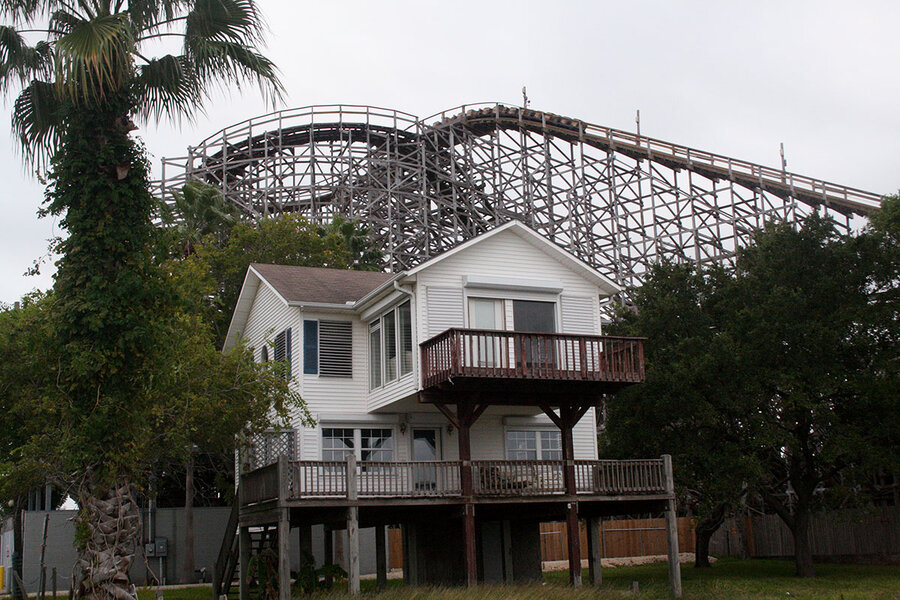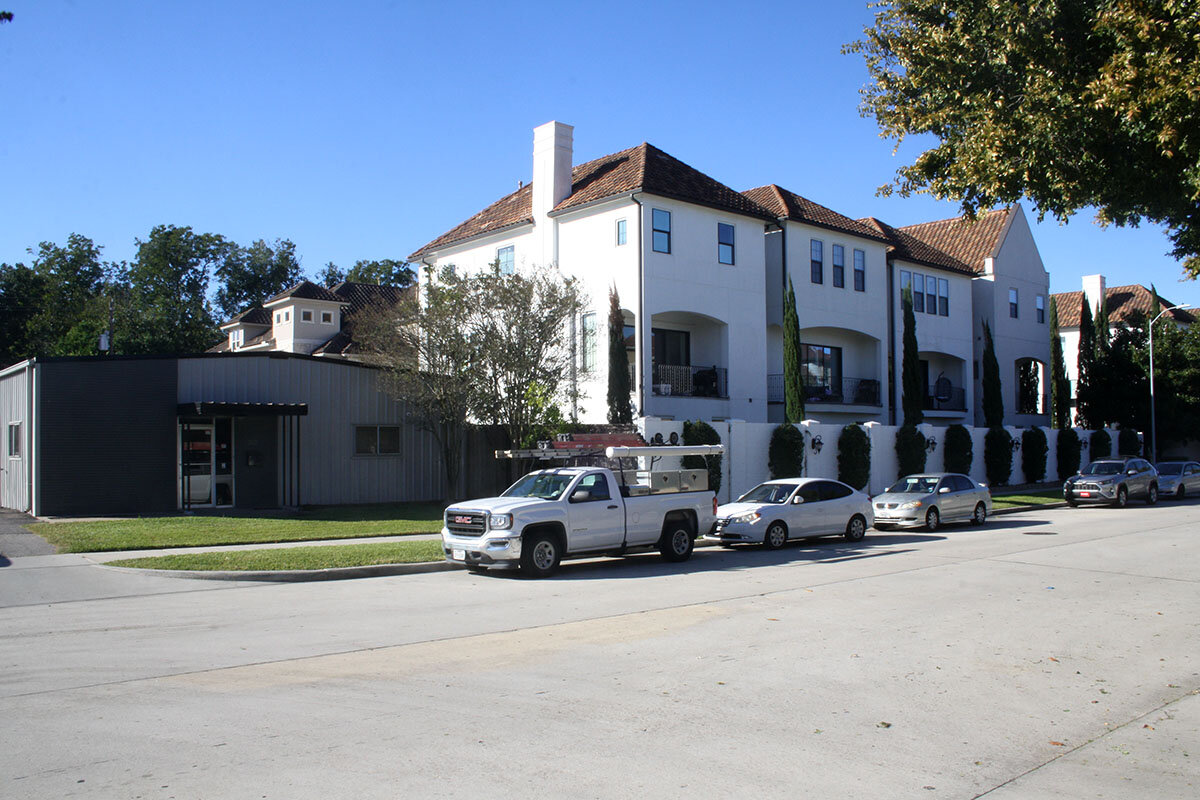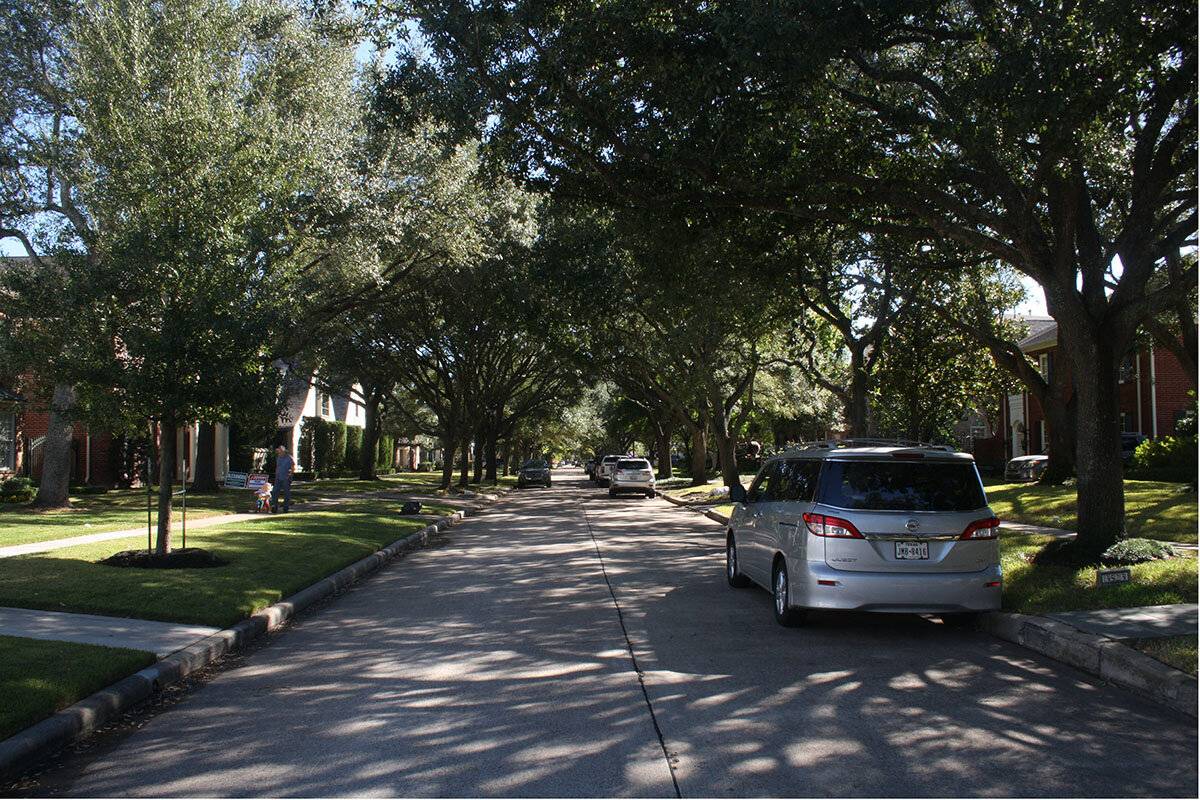No zoning: Is Houston an affordable housing model or morass?
Loading...
| KEMAH, TEXAS
For Tim Tran and his wife, the house they purchased at the corner of Fourth Street and Bay Avenue had everything.
Just 45 minutes from downtown Houston, it could have been in any small, seaside town. Palm trees line the streets and salt fills the air.
Then the “Boardwalk Bullet” moved in.
Why We Wrote This
A story focused onAre rules that protect homeowners making the global housing crisis worse by hindering badly needed construction? One city shows the pros and cons of an opposite approach – removing the red tape.
The nine-story wooden roller coaster has towered over the block since 2007. The ride, part of a boardwalk entertainment district, sits about 200 feet from Mr. Tran’s home. A house on the other side of Fourth Street is only 50 feet away. Every few minutes, from noon until 9 p.m. (or 11 a.m. to 10 p.m. on weekends), the ride pierces the salty air with roars and rattles and squeals.
“It’s so loud,” says Mr. Tran.
The Boardwalk Bullet is loud, and perfectly legal. The ride meets local setback requirements, and because the town of Kemah doesn’t have zoning, those were the only requirements. There was no public hearing before the ride’s owner got a building permit, the Houston Chronicle reported in 2007.
Mr. Tran and his wife moved out 10 years ago – though they still own the house and run it as a short-term rental. “Ninety-nine percent” of renters don’t care about the noise, he says.
“Only the people that live there complain, and there’s only a small number of people,” he adds. “There’s not much we can do about it.”
Unlike most of the United States, several cities in this corner of Texas don’t have zoning. Houston is the most prominent example, the nation’s only major city in this category. In Space City, like Kemah, just about anything goes, and economic prosperity and affordability live side by side, with few regulatory burdens.
Is this kind of freedom a recipe for abundant and affordable housing? The reality is a bit more complicated, experts say. Houston is the most affordable of America’s five biggest cities, but it doesn’t rise near the top of the pack in broader national affordability rankings. And while it doesn’t have formal zoning, the city does have land use policies. This more relaxed regime has allowed for a greater diversity of housing stock, and perhaps inhibited gentrification (for now), but it’s bred environmental and health concerns in certain neighborhoods.
“Houston isn’t exactly the free-for-all it gets portrayed as,” says Matthew Festa, a land use professor at South Texas College of Law Houston. “Houston is guilty as charged as being one of the most sprawling metropolises in the country,” he adds, “but it also makes it easier and less expensive to build affordable housing.”
Three votes against zoning
Why is Houston such an anomaly? One might think it’s because Houston is in Texas, and Texas can’t abide regulators telling you what you can and can’t do on your property.
But every other major city in Texas has zoning. The reason Houston doesn’t is really because Houston residents have been able to vote on the question – three times so far, to be exact. The 1948 and 1962 votes both rejected zoning by a comfortable margin, and the most recent vote – in a low-turnout 1993 referendum – saw the anti-zoners prevail by about 4 percentage points.
Houston does have “de facto” zoning, Professor Festa says. Land use regulations include height restrictions, minimum lot size requirements, and historic districts. Still, the broad effect is that, while you can’t build anything anywhere in Houston, there are fewer restrictions.
Thus, you can have a house next to a roller coaster; or a house covered fence-to-roof in beer cans; or apartments, town homes, and an elementary school on the same street as a crematorium.
Home prices are cheaper here. The median home price in Houston ranked 77 among 187 American metro areas in the second quarter this year – around cities like Gainesville and Daytona Beach in Florida – according to the National Association of Realtors.
Similarly, Houston is No. 20 in affordability, tied with Chicago and Atlanta, in a ranking based on incomes and housing costs among 56 U.S. cities this year. Half the U.S. cities were ranked as “seriously unaffordable,” according to the report by the Houston-based Urban Reform Institute and the Frontier Centre for Public Policy in Winnipeg, Manitoba.
Relaxed rules around minimum lot sizes seem to have enabled denser, more diverse housing – such as duplexes and town homes – in high-demand neighborhoods, according to a report last year by the Kinder Institute for Urban Research at Rice University. It found there’s been more housing development inside Houston’s inner loop alone than in the entire cities of Atlanta, San Diego, and San Francisco/Oakland.
“That’s not to say that gentrification isn’t happening, just that it could be more severe,” says Luis Guajardo, a senior policy specialist at the Kinder Institute.
A tale of two neighborhoods
Beneath Houston’s broad pattern, experiences can diverge sharply by community.
In the Manchester/Harrisburg neighborhood at the mouth of the Houston Ship Channel, on a cold fall afternoon, the air carries hints of gas. The 16-square-mile community – more than 90% Hispanic, according to census data – is bordered by refineries to the north and east and a large rail yard to the south, and bisected by the Interstate 610 bridge.
About 15 miles west, homes in West University Place have one similarity – the occasional Astros flag. But this community, with tree-lined streets named after colleges and poets, is its own municipality inside Houston – and does have zoning, almost entirely for single-family housing.
“It’s like we’ve privatized zoning,” says Mr. Guajardo. “The city has devolved [that] responsibility to homeowner associations, which might be inequitable in what neighborhoods have access to it.”
Take deed restrictions. These are written agreements that restrict activities, facilities, and operations in a subdivision. They’re enforced by the city and typically need to be renewed every 20 or 30 years. Affluent neighborhoods have often kept theirs in place while other parts of town have seen them lapse.
The city’s concrete batch plants are mostly in communities of color, the Houston Chronicle reported earlier this year, which lacked the rules or resources to fight them off.
Houston also has a land use tool that allows certain areas to keep and spend a portion of their property tax revenue.
“Even without zoning, the communities with more resources and knowledge and capacity and access can kind of work around the legislative rules,” says Professor Festa.
Yet Houston’s de facto zoning regime isn’t as simple as the more advantaged benefiting at the expense of the less advantaged. The relatively low home prices make it easier for buyers to get onto the property ladder. And businesses are attracted by the relative ease of construction and development, which brings jobs.
In Third Ward, a historically Black community near downtown, residents are fighting a proposal to make one neighborhood an official historical district because the accompanying regulations would be unaffordable for most homeowners. The resistance echoes the city’s 1962 zoning referendum, when African American and Mexican neighborhoods decisively opposed zoning, associating it with segregationist housing policies of the New Deal era.
On balance, “my perspective is that traditional zoning ... is an obstacle to equity, and it’s an obstacle to affordable housing,” says Professor Festa.
That view has been gaining traction beyond Texas. Oregon, California, and the city of Minneapolis are places that since 2019 have all been rolling back exclusive single-family zoning.
But Houston isn’t affordable on every metric. For the lowest-income residents, Houston doesn’t outperform other major American cities, zoning or no zoning.
In fact, only Las Vegas had a larger shortage of affordable rental homes last year than Houston, where there were 19 for every 100 renters, according to a report by the National Low Income Housing Coalition. That has translated into Houston having one of the highest eviction rates in the country.
“Our lowest-income folks just don’t have options,” says Mr. Guajardo. “We might be closer [to being a model] if we solved that foundational problem that’s afflicting every large city in the U.S.”








